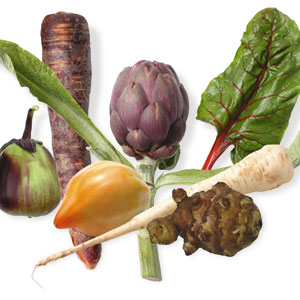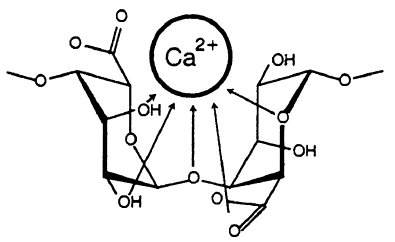 The physiologic processes by which food nurtures and maintains the body. These include chewing (MASTICATION), swallowing, and digesting food. Alimentation also encompasses the ABSORPTION of NUTRIENTS (VITAMINS MINERALS, AMINO ACIDS, FAT, CARBOHYDRATES) by the intestine and their use in CATABOLISM (energy production) and in ANABOLISM (building cellular constituents). The term alimentary canal refers to the digestive cavity running from the MOUTH to the anus. Artificial alimentation refers to feeding a patient artificially either by intravenous procedures or by a nasal tube. Forced alimentation is feeding a patient who is unwilling to eat.
The physiologic processes by which food nurtures and maintains the body. These include chewing (MASTICATION), swallowing, and digesting food. Alimentation also encompasses the ABSORPTION of NUTRIENTS (VITAMINS MINERALS, AMINO ACIDS, FAT, CARBOHYDRATES) by the intestine and their use in CATABOLISM (energy production) and in ANABOLISM (building cellular constituents). The term alimentary canal refers to the digestive cavity running from the MOUTH to the anus. Artificial alimentation refers to feeding a patient artificially either by intravenous procedures or by a nasal tube. Forced alimentation is feeding a patient who is unwilling to eat.
Wednesday, June 30, 2010
Understanding Alimentation
 The physiologic processes by which food nurtures and maintains the body. These include chewing (MASTICATION), swallowing, and digesting food. Alimentation also encompasses the ABSORPTION of NUTRIENTS (VITAMINS MINERALS, AMINO ACIDS, FAT, CARBOHYDRATES) by the intestine and their use in CATABOLISM (energy production) and in ANABOLISM (building cellular constituents). The term alimentary canal refers to the digestive cavity running from the MOUTH to the anus. Artificial alimentation refers to feeding a patient artificially either by intravenous procedures or by a nasal tube. Forced alimentation is feeding a patient who is unwilling to eat.
The physiologic processes by which food nurtures and maintains the body. These include chewing (MASTICATION), swallowing, and digesting food. Alimentation also encompasses the ABSORPTION of NUTRIENTS (VITAMINS MINERALS, AMINO ACIDS, FAT, CARBOHYDRATES) by the intestine and their use in CATABOLISM (energy production) and in ANABOLISM (building cellular constituents). The term alimentary canal refers to the digestive cavity running from the MOUTH to the anus. Artificial alimentation refers to feeding a patient artificially either by intravenous procedures or by a nasal tube. Forced alimentation is feeding a patient who is unwilling to eat.
Understanding Alginate
 (ammonium, calcium, potassium, and sodium salts of alginic acid) A food additive obtained from the giant kelp, a brown algae commercially harvested off the coast of California. Alginate is a major constituent of the cell wall and consists of polymers of acidic sugars Alginate is used by the food industry as a thickening and stabilizing agent because calcium alginate forms very stable gels in water. It prevents jelly in pastries from melting during baking and provides smooth textures to ICE CREAM, YOGURT and CHEESE, CANDY, whipped cream in pressurized cans, and canned frosting. Alginate also helps keep cocoa butter dispersed in chocolate milk. The red PIMENTO stuffed in green OLIVES contains the most alginate (6 percent) of any food source. Alginate is not used in acidic foods and beverage such as salad dressings and SOFT DRINKS, because it forms sediment under these conditions.
(ammonium, calcium, potassium, and sodium salts of alginic acid) A food additive obtained from the giant kelp, a brown algae commercially harvested off the coast of California. Alginate is a major constituent of the cell wall and consists of polymers of acidic sugars Alginate is used by the food industry as a thickening and stabilizing agent because calcium alginate forms very stable gels in water. It prevents jelly in pastries from melting during baking and provides smooth textures to ICE CREAM, YOGURT and CHEESE, CANDY, whipped cream in pressurized cans, and canned frosting. Alginate also helps keep cocoa butter dispersed in chocolate milk. The red PIMENTO stuffed in green OLIVES contains the most alginate (6 percent) of any food source. Alginate is not used in acidic foods and beverage such as salad dressings and SOFT DRINKS, because it forms sediment under these conditions.Alginate is on the GENERALLY RECOGNIZED AS SAFE (GRAS) list of the U.S. FDA. Short-term animal testing indicates the alginate is not absorbed by the body and is not toxic. Because alginate forms highly charged gels in water, it remains to be determined whether it can limit the absorption of minerals and other nutrients by the body.
Edible Algae (seaweed)

Simple plants found in fresh water and oceans throughout the world. Algae are largely undifferentiated and, unlike terrestrial plants, algal leaves and stems are composed of the same tissue. Edible species are either grown or collected along coastal intertidal zones. In Japan, six types are consumed, and together they account for an estimated 10 percent of the country’s total food production.
Edible brown algae, which represent most of the edible seaweed harvested worldwide, include arame, hiziki, kelp, and kombu. Edible red algae include CARRAGEENAN (Irish moss), dulse, and nori.
These “sea vegetables” are rich sources of MAGNESIUM, IRON, IODINE, and CALCIUM, and some are as rich in vitamins such as VITAMIN C, BETA-CAROTENE, VITAMIN E, and the B COMPLEX as the best cultivated sources. In addition, various algae are used commercially as sources of gums (AGAR, carrageenan, and ALGINATE). Carrageenan has the ability to form salt gels in milk products and is used to keep fats from separating, and to thicken ICE CREAM. Alginic acid (alginate) in brown seaweed can bind toxic metals in the body and speed their removal. These algae can be added to SOUPS, VEGETABLES, SALADS, BEAN dishes, and GRAINS to add zest and boost nutritional value. Their flavor is neither fishy nor salty. There is little information on toxic metal contamination of any domestic or imported seaweed. One study found very low amounts of arsenic, cadmium, lead, and mercury in common imported varieties; the levels were well below limits set by the Food Chemicals Codex of the Food and Nutrition Board. Mercury levels were far below the limits set for fish.
Subscribe to:
Posts (Atom)
